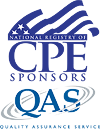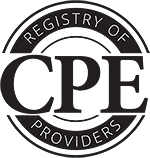This course is dedicated to the evaluation of case scenarios related to Step Four and Five of the revenue recognition model. Step Four entails “Allocating the Transaction Price to Performance Obligations”. Step Five entails “Recognizing Revenue”. Previous courses have outlined each of the individual five steps of the model and provided case examples. We have also developed two broad case study courses that cover scenario examples for each of the five steps.
In order to focus directly on aspects within each step, individual courses have been created with multiple case scenarios that apply to the individual given steps. This course includes the many considerations companies must take into account when determining how to allocate the transaction price to performance obligations and then move to the final step of recognizing revenue. We review the concepts of allocation methods and methods to estimate stand-alone selling price. We also discuss aspects involved in recognizing revenue including accounting for discounts, variable consideration and how to recognize revenue over time versus at a point in time.
After taking this course, you should be able to effectively apply your understanding of Step Four and Five of the revenue recognition model to specific scenarios within your business. Each learning objective listed utilizes multiple examples from various industries to help interpret and practice the concept.
Note: Information within this course comes from readily available public domain documents and is utilized by the trainer as a supplement for relaying the course content.
Resources Consulted: • ASC 606-10-32-15 to 32-20, 55-244 to 55-246. • ASU 2014-09: “Revenue from Contracts with Customers.” BC229-BC247. • Croner-I, “A14 Revenue from Contracts with Customers.” (2019). Section 7.4.2-2 and 7.4.2-2. • FASB, ”Revenue Recognition Implementation Q&As.” January 2020). Questions 31-37. • FASB TRG Memo 20: “Significant Financing Components.” 26 January 2015. • FASB TRG Memo 30: “Significant Financing Components.” 30 March 2015. • EY, Financial Reporting Developments: “Revenue from contracts with customers.”January 2020. Section 5.5. • KPMG, Handbook: “Revenue Recognition.”December 2019. Section 5.5. • PWC, “Revenue from contracts with customers”March 2020. Section 4.4. • https://www.revenuehub.org/
Prerequisites
No Advanced Preparation or Prerequisites are needed for this course. However, it is recommended to take the other courses in the series prior to completing this one.
Learning Objective
- Identify important components involved in Step Four – Allocate transaction price to Performance Obligations (PO).
- Explore the various estimation approaches for determining stand-alone selling price (SSP) outlined by the standard.
- Identify how to allocate discounts between performance obligations.
- Explore concepts of variable consideration.
- Explore elements of Step Five – recognize revenue.
- Identify how to recognize revenue over time vs. at a period of time.
- Identify methods for measuring progress towards completion of a project including input method and output method.
- Explore concepts of enforceable right of payment.
- Identify components necessary when a right of return exists.
Last updated/reviewed: March 11, 2024



Ask the instructor a question about this lesson